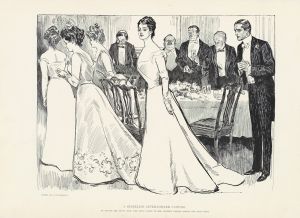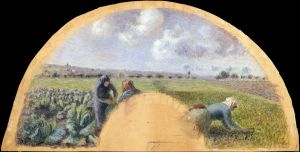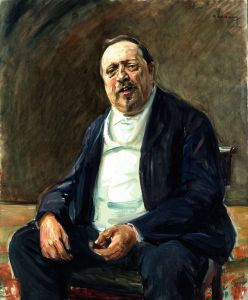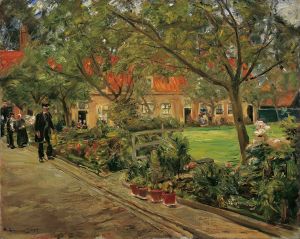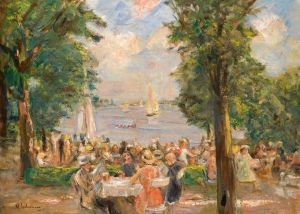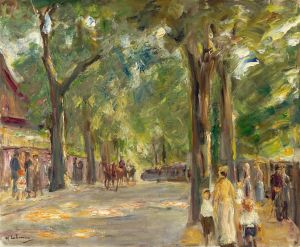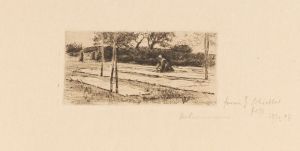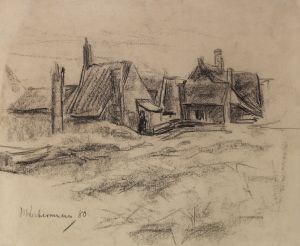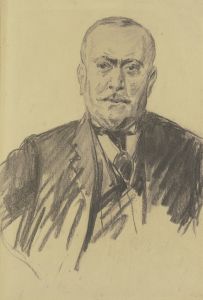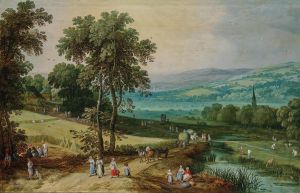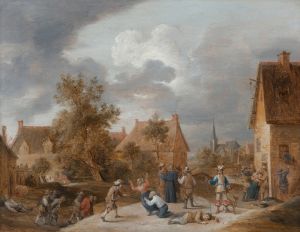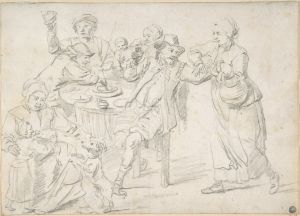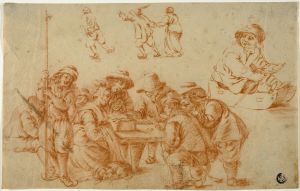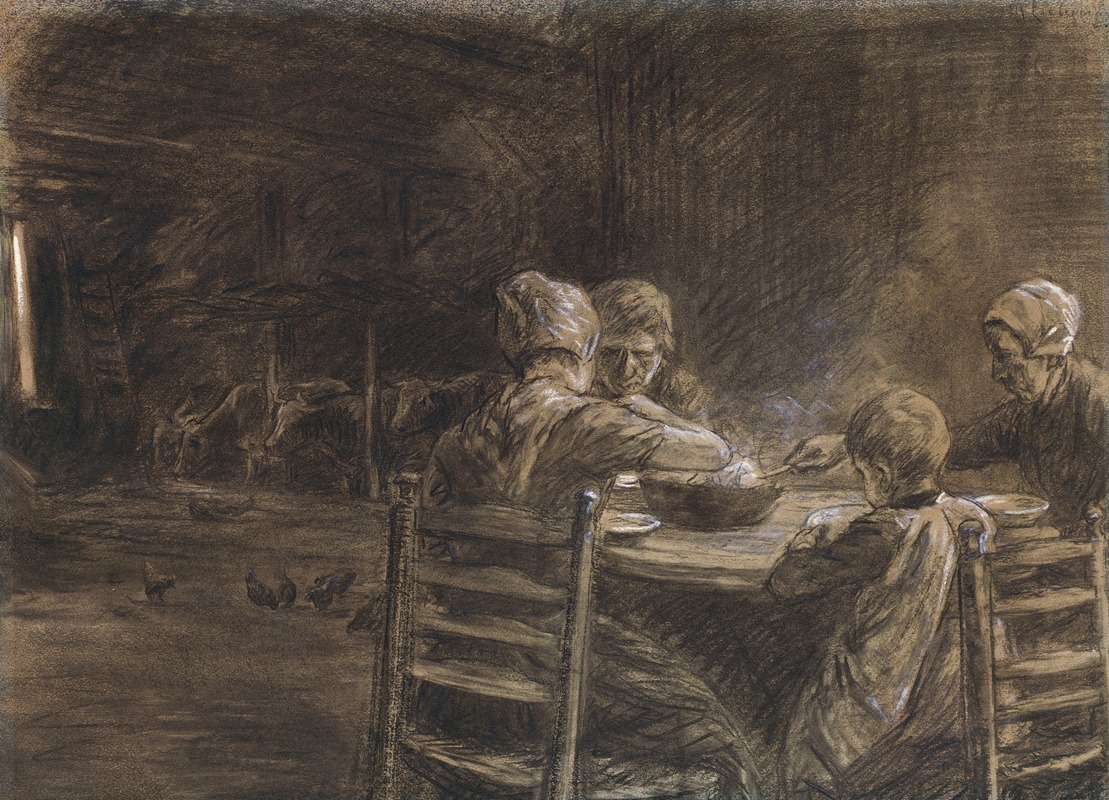
East Frisian Peasants Eating Supper
A hand-painted replica of Max Liebermann’s masterpiece East Frisian Peasants Eating Supper, meticulously crafted by professional artists to capture the true essence of the original. Each piece is created with museum-quality canvas and rare mineral pigments, carefully painted by experienced artists with delicate brushstrokes and rich, layered colors to perfectly recreate the texture of the original artwork. Unlike machine-printed reproductions, this hand-painted version brings the painting to life, infused with the artist’s emotions and skill in every stroke. Whether for personal collection or home decoration, it instantly elevates the artistic atmosphere of any space.
Max Liebermann's painting "East Frisian Peasants Eating Supper" is a notable work by the German painter, who was a leading figure in the Impressionist movement in Germany. Created in 1893, this painting is an exemplary piece that showcases Liebermann's interest in depicting everyday life and his ability to capture the essence of rural existence with authenticity and empathy.
The painting portrays a group of East Frisian peasants gathered around a table, partaking in a simple meal. East Frisia is a region in the northwest of Germany, known for its distinct cultural and historical identity. Liebermann's choice to depict peasants from this area reflects his broader interest in rural themes and the lives of ordinary people, which was a common subject in his oeuvre.
Liebermann's style in this painting is characterized by loose brushwork and a muted color palette, which are hallmarks of Impressionism. The use of light and shadow in the painting is particularly noteworthy, as it adds depth and dimension to the scene, creating a sense of intimacy and immediacy. The figures are rendered with a degree of realism that captures their individuality and the quiet dignity of their daily lives.
The composition of the painting is carefully constructed to draw the viewer's attention to the central activity of eating. The peasants are seated around a wooden table, with their simple attire and modest surroundings emphasizing the humble nature of their existence. The focus on the communal aspect of the meal highlights themes of togetherness and shared experience, which are central to many of Liebermann's works.
"East Frisian Peasants Eating Supper" is also significant for its social commentary. During the late 19th century, Germany was undergoing rapid industrialization and urbanization, which brought about significant changes in society. By choosing to depict rural life, Liebermann not only documented a way of life that was increasingly under threat but also celebrated the enduring values of simplicity and community.
Max Liebermann was a prominent member of the Berlin Secession, an art movement that sought to challenge the conservative art establishment in Germany. His work, including "East Frisian Peasants Eating Supper," played a crucial role in the development of modern art in Germany. Liebermann's commitment to realism and his focus on contemporary subjects helped pave the way for future generations of artists.
The painting is housed in the Kunsthalle Bremen, a major art museum in Germany, where it continues to be appreciated by art enthusiasts and scholars alike. Its presence in the museum's collection underscores its importance as a work of art and its relevance to the cultural and historical context of its time.
In summary, "East Frisian Peasants Eating Supper" by Max Liebermann is a significant work that exemplifies the artist's skill in capturing the nuances of everyday life. Through its depiction of rural peasants, the painting offers a glimpse into a world that was both familiar and rapidly changing, reflecting broader themes of social change and the enduring human spirit.





